Hello everyone.
I'm sort of new here and sort of not- I've been lurking around this site for about three years, and figured it's time to introduce myself. My main interests right now are 17th/18th century backswords, hangers and cutlasses, and i'm starting to develop a fixation on sinclair hilts. does anyone know of any good references for sinclair hilts?
Thanks,
Mike Wells
One good place to start is with E. Oakeshott's book "European Weapons & Armour -From the Renaissance to the Industrial Revolution". I'm sure others will have good sources to throw your way as well, this is a grand place for obtaining useful info. - lots of most helpful folks.
BTW A thousand welcomes to you!
My main interest/research in the "Mortuary" hilt of the 17th c., some say kinda/ sorta kin to Sinclair & Walloon hilt swords.
Check out the review and photo album sections of this site too for added info. on the Sinclair.
Cheers,
Bill
BTW A thousand welcomes to you!
My main interest/research in the "Mortuary" hilt of the 17th c., some say kinda/ sorta kin to Sinclair & Walloon hilt swords.
Check out the review and photo album sections of this site too for added info. on the Sinclair.
Cheers,
Bill
| Mike W wrote: |
|
...i'm starting to develop a fixation on sinclair hilts... Mike Wells |
Hi Mike...
Welcome on to the forum buddy :D
For some reason I have become somewhat fascinated by the Sinclair hilts also. I think it is because they seem to be a combination of so many types of baskethilt forms. Although some forms are ugly, to my eye, there is this ideal Sinclair hilt form that just seems right. It is like the Scottish baskets or the Schiavona or the Swepthilt rapier hilts, the shapes and proportions seem work together into an ideal form. I'm not sure I have ever actually seen the ideal but I can see it in my mind. And in the near future I hope to have it in my hands. (it's my next commission).
Here's a teaser...
ks
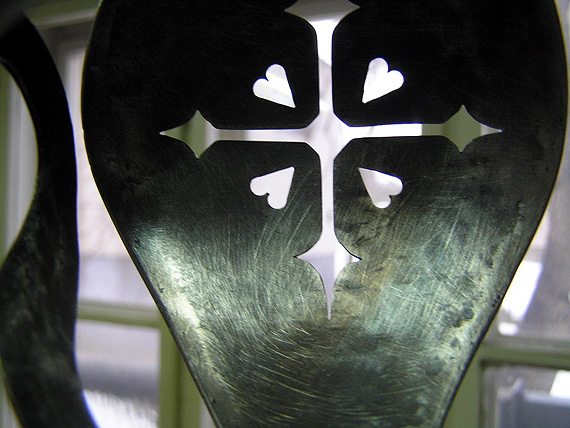
Oakeshott has very little to say about the Sinclair hilts. And when you do a google search the only real hits are on the best sword forum on the internet: myArmoury.com. Here is a summary of what Oakeshott says:
South German origin. Large triangular plate very often pierced with circles diamonds or hearts. The pommel is a flattened pyramid with slightly curved edges. The grip is always short and of oval section.
Oakeshott relates how Victorian collectors gave these types of sword hilts the name “Sinclair.” It seems that many of these types of hilts made their way into Norway in the 19th century in the antiquities trade. Victorian collectors noted a resemblance to the Scottish baskethilts. The connection with Scots brought to their mind a band of Scottish mercenaries that tried to fight their way across Norway in 1612. They were routed in the Gudrun Valley. This ill-fated band of mercenaries was led by Colonel George Sinclair. And so in a series of very weak associations Sinclair’s name has been attached to this type of sword hilt.
Although the development of the complex hilt is itself very complex, there does seem to be a connection with the German baskethilts. However it seems like every basket form is connected to the German baskethilts. It is almost like the German basket is a seminal form from which many other basket forms sprang. I also wonder if they may have some connection to swords with sail guards (Italian... I think).
Here are some composites I put together for anyone interested in this fascinating basket design:
ks
 Attachment: 76.36 KB
Attachment: 76.36 KB
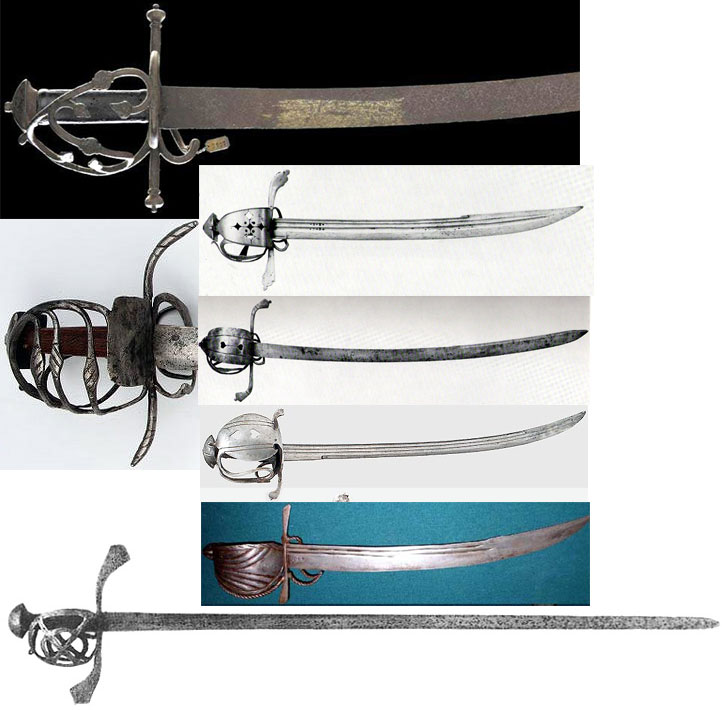
German forms Left True Sinclair forms Right
 Attachment: 87.5 KB
Attachment: 87.5 KB
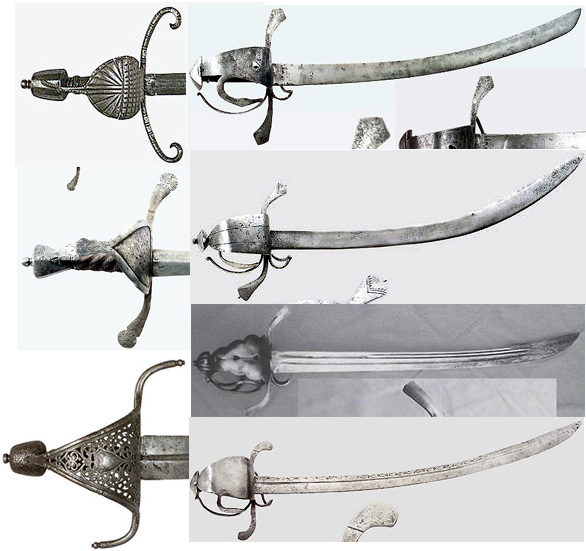
Italian? forms Left True Sinclair forms Right
South German origin. Large triangular plate very often pierced with circles diamonds or hearts. The pommel is a flattened pyramid with slightly curved edges. The grip is always short and of oval section.
Oakeshott relates how Victorian collectors gave these types of sword hilts the name “Sinclair.” It seems that many of these types of hilts made their way into Norway in the 19th century in the antiquities trade. Victorian collectors noted a resemblance to the Scottish baskethilts. The connection with Scots brought to their mind a band of Scottish mercenaries that tried to fight their way across Norway in 1612. They were routed in the Gudrun Valley. This ill-fated band of mercenaries was led by Colonel George Sinclair. And so in a series of very weak associations Sinclair’s name has been attached to this type of sword hilt.
Although the development of the complex hilt is itself very complex, there does seem to be a connection with the German baskethilts. However it seems like every basket form is connected to the German baskethilts. It is almost like the German basket is a seminal form from which many other basket forms sprang. I also wonder if they may have some connection to swords with sail guards (Italian... I think).
Here are some composites I put together for anyone interested in this fascinating basket design:
ks

German forms Left True Sinclair forms Right

Italian? forms Left True Sinclair forms Right
Kirk-
I'm also very intrigued by this hilt type. It's fascinating to me.
I'm also very intrigued by this hilt type. It's fascinating to me.
Here are three more comparisons...
In each case there seems to be at least one feature that crosses the boundary.
ks
 Attachment: 53.49 KB
Attachment: 53.49 KB
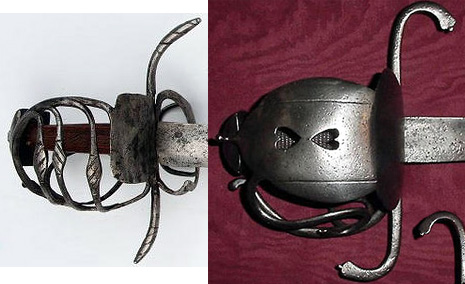
German Form and Sinclair
 Attachment: 73.59 KB
Attachment: 73.59 KB
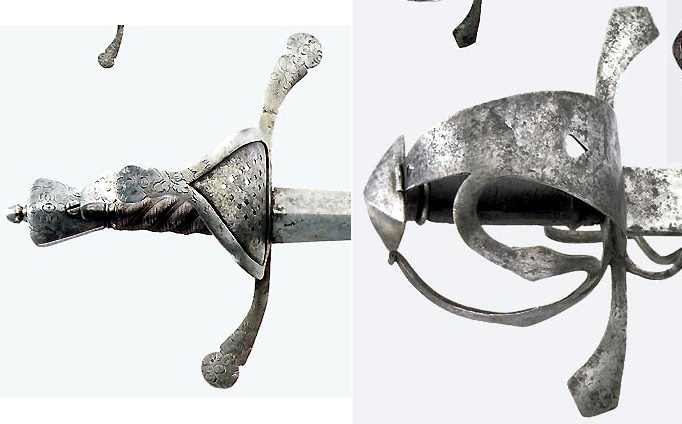
Italian? Form and Sinclair
 Attachment: 72.07 KB
Attachment: 72.07 KB
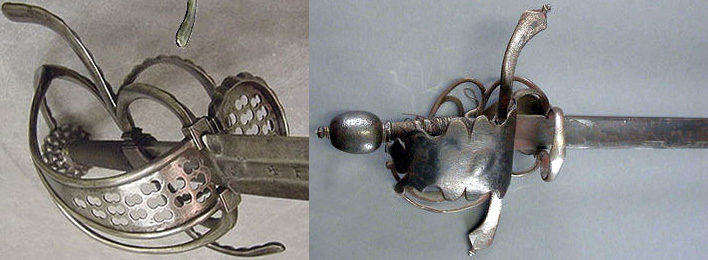
Rapier Form and Sinclair
In each case there seems to be at least one feature that crosses the boundary.
ks

German Form and Sinclair

Italian? Form and Sinclair

Rapier Form and Sinclair
Last edited by Kirk Lee Spencer on Wed 01 Feb, 2006 5:00 am; edited 1 time in total
| Kirk Lee Spencer wrote: |
| Oakeshott relates how Victorian collectors gave these types of sword hilts the name “Sinclair.” *snip* And so in a series of very weak associations Sinclair’s name has been attached to this type of sword hilt. |
Aha! So that's where the name comes from. I've always wondered. Thanks, Kirk!
Also, very cool pics. In the very last one, though, with the rapier compared to the Sinclair hilt, I don't think the similarities are strong... the rapier appears to be a left handed one, and the "shell" is for the inside guard, not the outside in the way Sinclair hilts typically seem to be.
very nice swords :)
Thx a lot for sharing!
Many of these sinclair-sabers look very similar to 16/17th century Dussacks. Interesting to see how different countries tweaked the basket-hilt idea to meet their needs and taste.
A dussack from Styria, Austria
[ Linked Image ]
[ Linked Image ]
Thx a lot for sharing!
Many of these sinclair-sabers look very similar to 16/17th century Dussacks. Interesting to see how different countries tweaked the basket-hilt idea to meet their needs and taste.
A dussack from Styria, Austria
[ Linked Image ]
[ Linked Image ]
| Kirk Lee Spencer wrote: |
| The connection with Scots brought to their mind a band of Scottish mercenaries that tried to fight their way across Norway in 1612. They were routed in the Gudrun Valley. This ill-fated band of mercenaries was led by Colonel George Sinclair. And so in a series of very weak associations Sinclair’s name has been attached to this type of sword hilt.
|
Not as much routed as masacred, I'm affraid...
The battle of Kringen was a major item of pride in early norwegian nationalism; Complete with cruel scotsmen rampaging the countryside, whereupon the Sons of the Vales rise, picking their axes of the wall, and go to meet them. They are cought in ambush. A local girl is hiding with her horn, until the scots pass a certain point, and the norwegians let loose large bundles of loggs on top of them. Whereupon the battle starts, and every single scotsman is slain.
In reality, of course, the scots where quite cautious, and tried not to upset the locals, but the people that met them where reacting to pure rumours.
The actual fighting ended shortly after the initial attack, and about 250 of the 300 scots surrendered.
But at some point the farmers found out that they would have to feed these prisoners, and with sound economical sense, executed all but a couple, who where sent to Copenhagen as prisoners.
(rumours also has it that some of the stronger looking where married of to various spinster sisters in the region.... :D )
Some of the farms in the area still have swords captured at Kringen; these are probably genuine, as the amount of scottish backswords sold to norway wouldn't have been that large...
| Bill Grandy wrote: |
| The rapier appears to be a left handed one, and the "shell" is for the inside guard, not the outside in the way Sinclair hilts typically seem to be. |
I was wondering about that... The perspective is really odd (taken from the bottom) and it just didn't look right.
Somehow I flipped the picture when I was putting the composite together. So it was not a lefthanded sword but a right handed sword that was flipped. Good eye my friend :eek:
I have restored it now in the right orientation and it is clear that you are exactly right... what looks like a proto sail guard is indeed on the inside.
Thanks
ks
Last edited by Kirk Lee Spencer on Wed 01 Feb, 2006 5:13 am; edited 1 time in total
| Elling Polden wrote: |
|
Not as much routed as masacred, I'm affraid... The battle of Kringen was a major item of pride in early norwegian nationalism; Complete with cruel scotsmen rampaging the countryside, whereupon the Sons of the Vales rise, picking their axes of the wall, and go to meet them. They are cought in ambush. A local girl is hiding with her horn, until the scots pass a certain point, and the norwegians let loose large bundles of loggs on top of them. Whereupon the battle starts, and every single scotsman is slain. In reality, of course, the scots where quite cautious, and tried not to upset the locals, but the people that met them where reacting to pure rumours. The actual fighting ended shortly after the initial attack, and about 250 of the 300 scots surrendered. But at some point the farmers found out that they would have to feed these prisoners, and with sound economical sense, executed all but a couple, who where sent to Copenhagen as prisoners. (rumours also has it that some of the stronger looking where married of to various spinster sisters in the region.... :D ) Some of the farms in the area still have swords captured at Kringen; these are probably genuine, as the amount of scottish backswords sold to norway wouldn't have been that large... |
Hey Elling...
Very interesting stuff!
Thanks for the clarification :D
ks
Time for a bit of thread necromancy... ;)
I've just recently become very interested in this hilt design, and I'd be particularly interested in seeing/learning more about the one pictured on the right hand side of this image (so kindly provided above by Mr. Spencer):
[ Linked Image ]
Are more images available of this example? I notice the normally "sail"-esque guard is different from most others shown, as is the pommel. Very cool.
I've just recently become very interested in this hilt design, and I'd be particularly interested in seeing/learning more about the one pictured on the right hand side of this image (so kindly provided above by Mr. Spencer):
[ Linked Image ]
Are more images available of this example? I notice the normally "sail"-esque guard is different from most others shown, as is the pommel. Very cool.
| Charles B wrote: |
| Time for a bit of thread necromancy... ;)
...Are more images available of this example? I notice the normally "sail"-esque guard is different from most others shown, as is the pommel. Very cool. |
Hey Charles...
Don't have anymore info on this sword.
However, here is a larger picture of it with more hilt detail.
ks
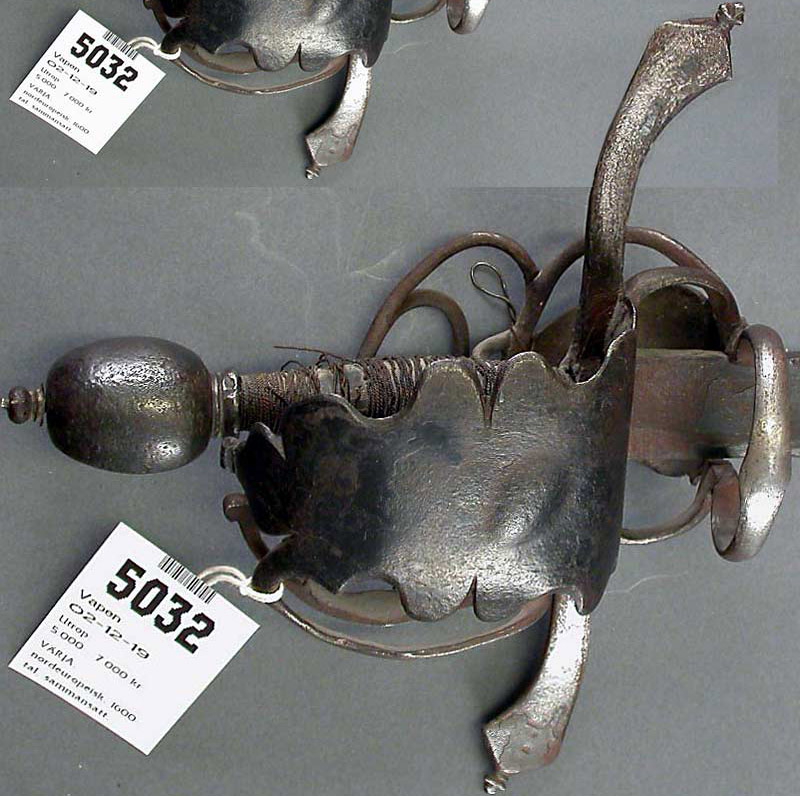
Awesome! Thank you very much!
So, given that the attribution of these swords to Sinclair and his Scots of 1612 is inaccurate, who exactly would have used such blades? I've seen them frequently referred to as Germanic in origin, but I'm not sure whether that means they were only popular in that area, or if the use was more widespread throughout Europe. Can anyone provide more insight?
So, given that the attribution of these swords to Sinclair and his Scots of 1612 is inaccurate, who exactly would have used such blades? I've seen them frequently referred to as Germanic in origin, but I'm not sure whether that means they were only popular in that area, or if the use was more widespread throughout Europe. Can anyone provide more insight?
| Kirk Lee Spencer wrote: | ||
Hey Charles... Don't have anymore info on this sword. However, here is a larger picture of it with more hilt detail. ks |
I notice the word "sammansatt" on the label, meaning composite, so odds are that it's a 19th century assembly.
So far I've noticed that all these sabers were photo'd from the right, showing only the external side. I wonder if some Sinclairs have thumb rings - Kirk, I'm referring to your pic here, it does look like the one on the right has a thumb ring:
 Attachment: 73.59 KB
Attachment: 73.59 KB
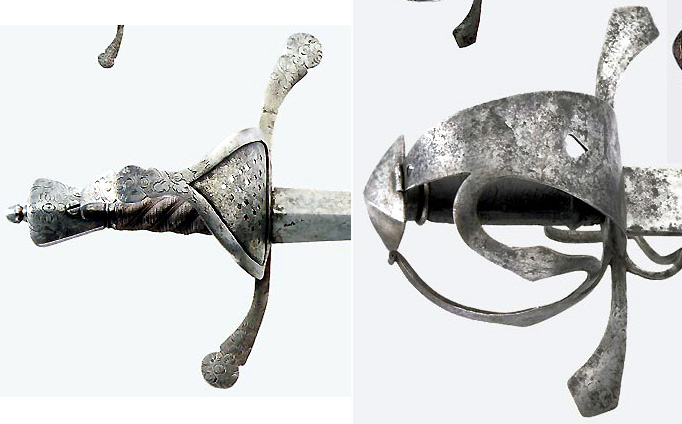

| Kjell Magnusson wrote: | ||||
I notice the word "sammansatt" on the label, meaning composite, so odds are that it's a 19th century assembly. |
Hey Kjell
Good spot on that one!
It does have that 19th century look to it.
thanks
ks
| Sa'ar Nudel wrote: |
| So far I've noticed that all these sabers were photo'd from the right, showing only the external side. I wonder if some Sinclairs have thumb rings - Kirk, I'm referring to your pic here, it does look like the one on the right has a thumb ring: |
Hi Sa'ar...
You're right... I do believe it does have a thumb ring. Most of the pictures I have seen are taken from the outboard side. So it is difficult to get a look at the thumb ring. I have a few images that show the inboard side.
ks
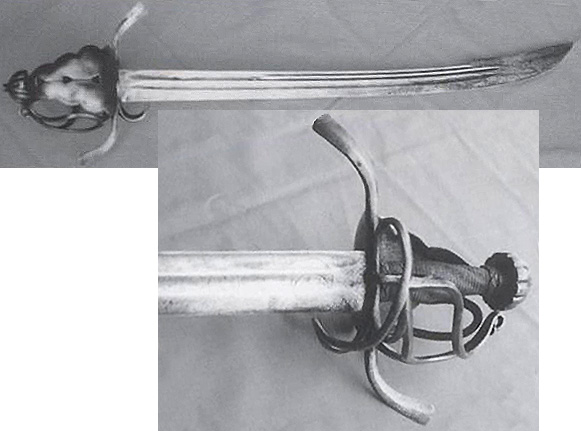
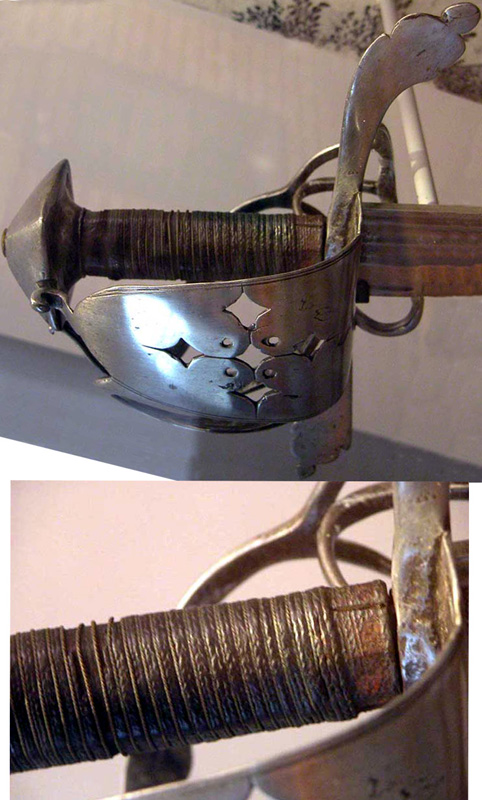
Falchion. Italian 1600 Image by Sean Flynt
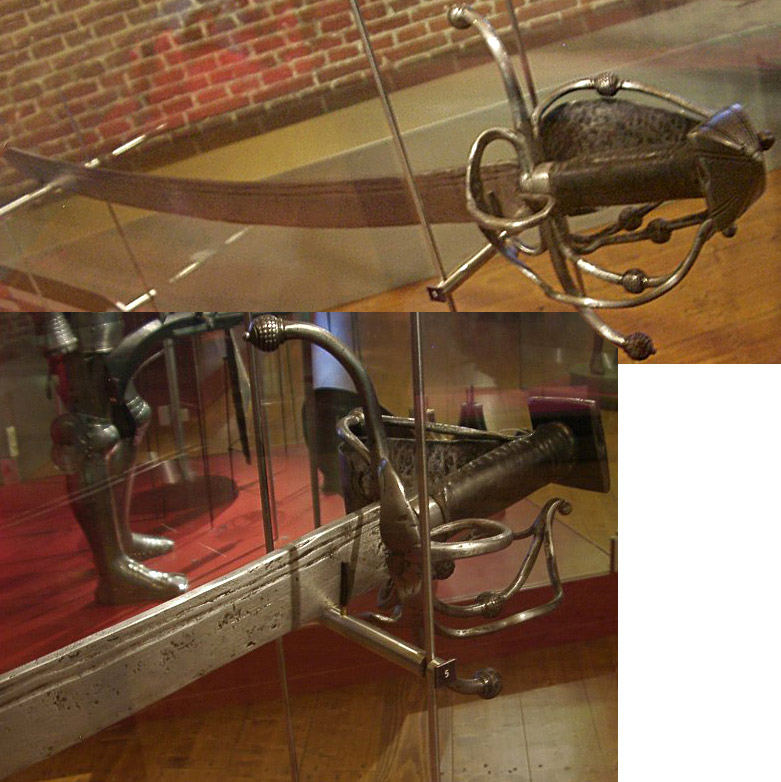
Find preserved in Army Museum, Delft Netherlands. Photo by Jeroen Zuiderwijk
Great pics, Kirk, thanks. So, Sinclair sabers did have thumb ring occasionaly. That's an important fact, particularly when we know the thumb ring has became popular across Europe along the 17th c.
| Sa'ar Nudel wrote: |
| ...So, Sinclair sabers did have thumb ring occasionaly. That's an important fact, particularly when we know the thumb ring has became popular across Europe along the 17th c. |
Hey Sa'ar...
I suspect that thumb rings may have been a relatively common feature of Sinclair hilts...
Here are a few more finds with this feature.
ks
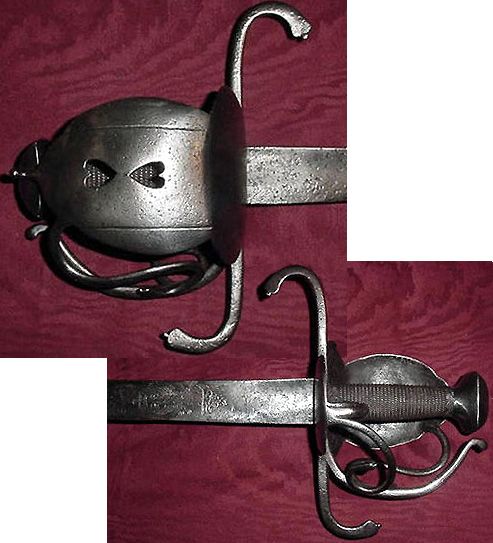
Photos by Stephen Fisher
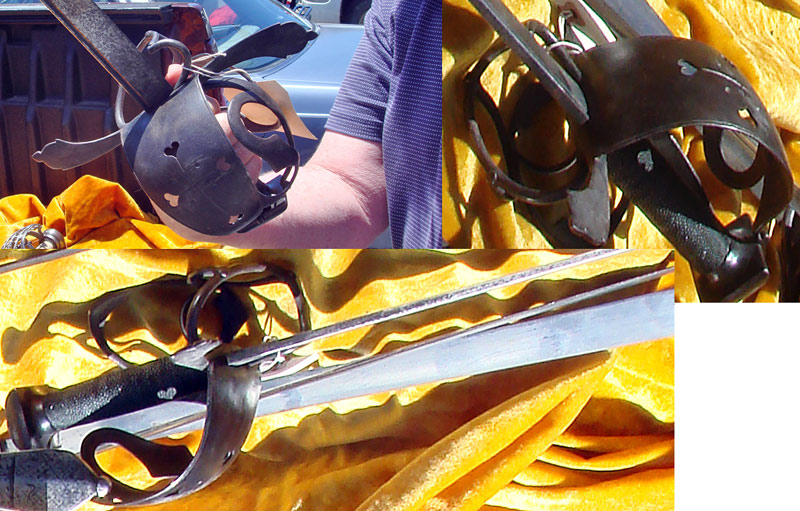
Photos by Ben Sweet
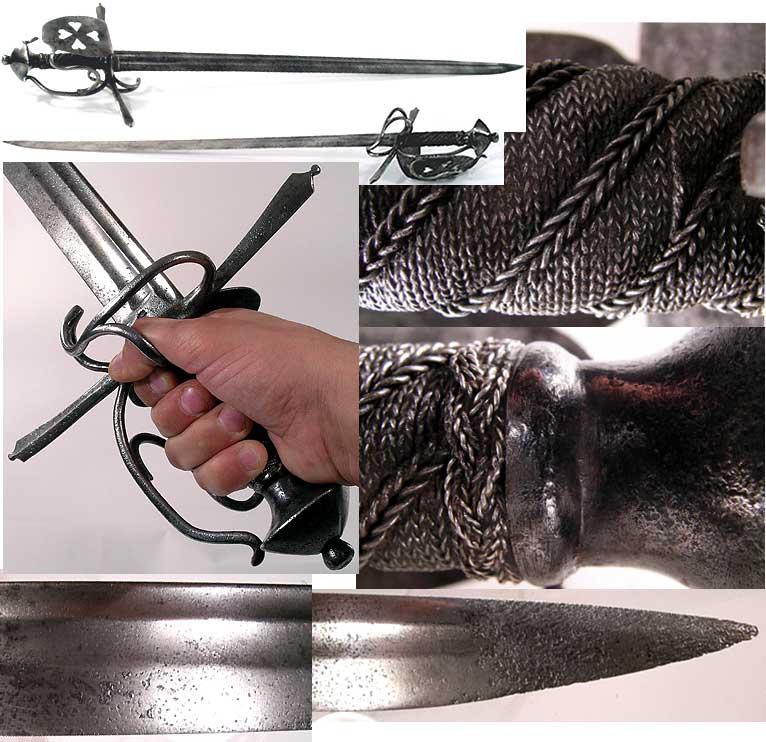
Photos by Stephen Fisher
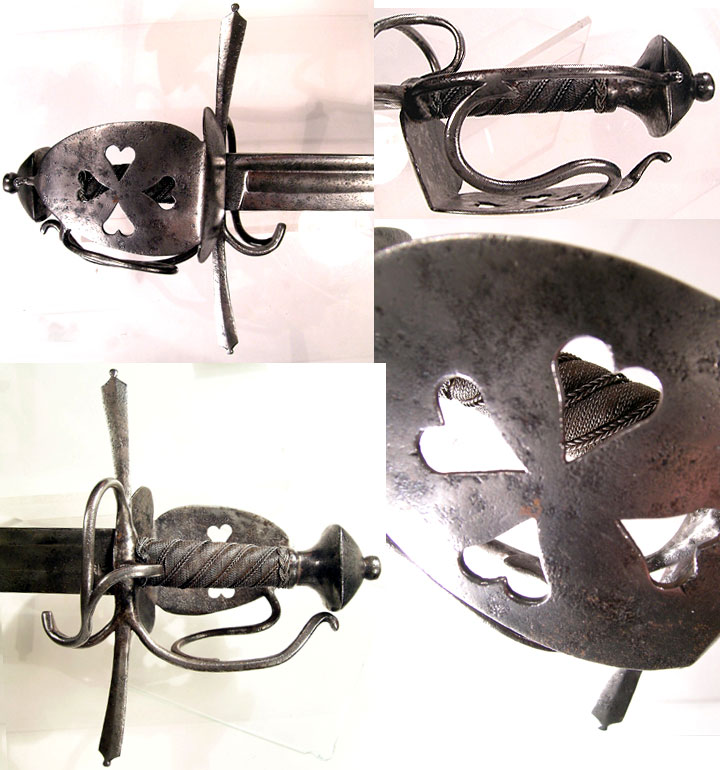
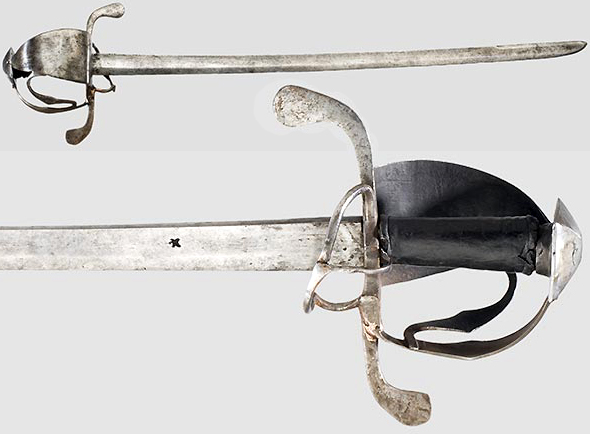
Length 95 cm. Images from Hermann Historica
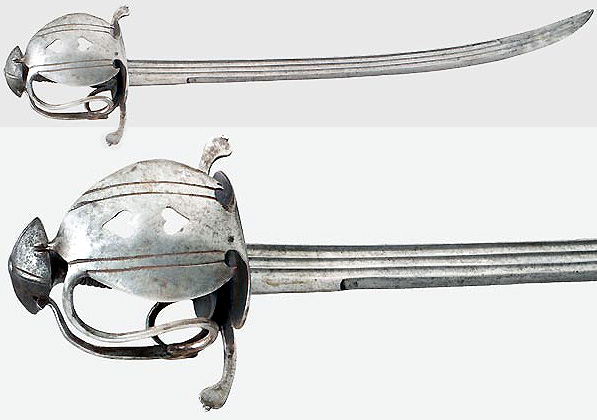
Images from Hermann Historica
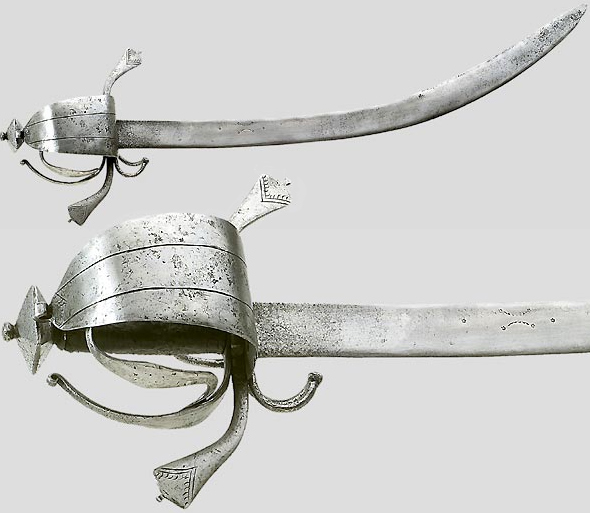
Images from Hermann Historica
Page 1 of 2
You cannot post new topics in this forumYou cannot reply to topics in this forum
You cannot edit your posts in this forum
You cannot delete your posts in this forum
You cannot vote in polls in this forum
You cannot attach files in this forum
You can download files in this forum
All contents © Copyright 2003-2006 myArmoury.com — All rights reserved
Discussion forums powered by phpBB © The phpBB Group
Switch to the Full-featured Version of the forum
Discussion forums powered by phpBB © The phpBB Group
Switch to the Full-featured Version of the forum